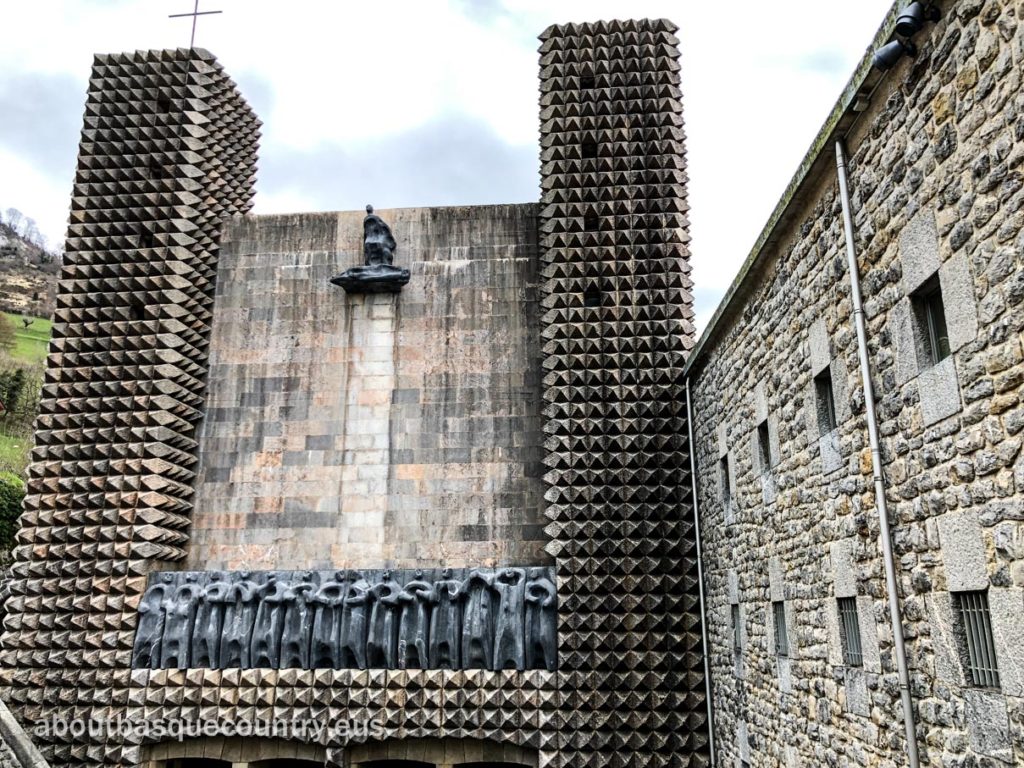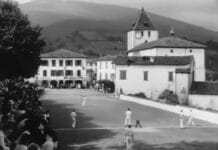This article was translated by John R. Bopp
On this day in 1969, extraordinary Basque artist Jorge Oteiza put the finishing touches on one of the most impressive sculptures we have in the Basque Country: the 14 Apostles and the Pietà that make up the façade of the Sanctuary of Arantzazu.


The story of Oteiza’s work at Arantzazu, as well as that of other Basque artists who participated in the project, is the story of a misunderstanding and the story of the resistance to a new form of expressing Faith via images.
We mustn’t forget that between the official opening of the basilica on August 30, 1955, and the moment Oteiza’s art was installed, fourteen years passed, fourteen years during which the Fourteen Apostles were abandoned on the side of the road because, as the Church claimed, “…the artists have been led astray by modernist trends, which do not bear in mind the precepts of the Holy Church as regards Sacred Art”. According to Oteiza, his sculptures spent that long time in a “terrestrial slumber” that they awoke from when they finally took their places of honor.
Every time we visit the Sanctuary, we admire the bravery of those Franciscans who decided to encourage an aesthetic revolution at the height of a Catholic-fascist dictatorship in such a religiously and socially meaningful place as Arantzazu.
Their wager, in the end, won out. Arriving at the Sanctuary is like feeling the strength of the land and its history. It’s like feeling the strength of the hundreds of thousands of Basques who have carried Andra Mari in their hearts, in Basque lands and to wherever they have gone, as shown by the pleiad of brotherhoods and guilds throughout the Americas for which Our Lady of Arantzazu is the patron. It’s like feeling the energy that encouraged those Franciscan brothers to place a bet on the future of art.
But standing before that façade, entering into the nave, or going down into the crypt, is also like feeling the strength of a nation moving forward to which that place is tightly bound. It’s like feeling the strength of a People capable of preserving and respecting their traditions while still placing themselves at the prestigious vanguard of art.
On this special day, we’d like to remember that event, sharing the reports we’ve found on the Sanctuary’s website about these works and how meaningful they are. We’d also like to share the entries we’ve written about this place and the projection this dedication to Mary has had throughout the Americas, as seen by the Basques who went there.
Arantzazu, Euskadi
La Fachada: historia de su decoración
La Fachada: descripción y significado
Los arquitectos de la Basílica de Arantzazu, Francisco Javier Sáenz de Oiza y Luis Laorga, tuvieron claro desde el principio que el escultor de la fachada debía ser Jorge Oteiza. Los franciscanos fueron convencidos sin dificultad y se le adjudicó, sin concurso, la decoración del friso exterior. Pero rápidamente comenzaron las críticas contra su obra, puesto que no se adecuaba a la estatuaria eclesiástica clásica. El Obispo de San Sebastián, Jaime Font Andreu, pidió a Oteiza, a finales de 1953, que presentara una memoria justificativa de su estatuaria y al guardián de Arantzazu, el proyecto del friso y unas fotografías de los apóstoles.
(Follow) (Automatic translation)
Viewpoints: the Sanctuary of Our Lady of Arantzazu. Promises kept (video and photos)
A photo of Our Lady of Arantzazu and the “miraculous” ability of Basque to synthesize
February 13: 406 years of the foundation of the Brotherhood of Arantzazu in Lima
Closing a nearly five-century old circle: a ‘novena’ of the Basques of Lima translated into Basque
Last Updated on Dec 20, 2020 by About Basque Country






























